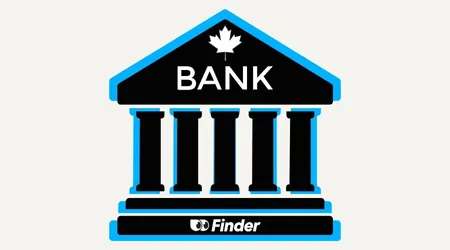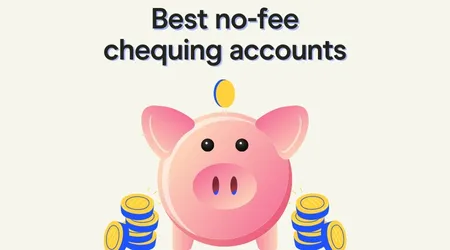Compare savings accounts
Finder Score for savings accounts
To make comparing even easier we came up with the Finder Score. Interest rates, account fees and features across 50+ savings accounts and 25+ lenders are all weighted and scaled to produce a score out of 10. The higher the score the better the account - simple.
A savings account is a bank account designed to help you save money with quick access your funds if you need money in an emergency.
But savings accounts come in several forms, including high-interest savings accounts and registered accounts like TFSAs. And with so many options to choose from, how do you decide which one is right for you?
In this guide, we’ll explore how savings accounts work, what interest rates they offer, and how to choose an account that matches your needs.
What is a savings account?
Savings accounts are bank accounts that pay interest on the money you deposit. They offer a safe and secure way to grow your money, either to pay for a future purchase or just so you have funds set aside for a rainy day.
Savings accounts are available from every bank and credit union in Canada. The biggest factor separating all of the different options out their is the interest rate the bank offers.
How do savings accounts work?
When you put money in a savings account, it doesn’t just sit there. Instead, banks pay you interest – a percentage of your balance – to keep your money stored with them. That means that you earn interest on every dollar in your account and your money grows without you having to do anything.
Should I open a savings account in Canada?
Yes, there are several reasons why opening a savings account is a good idea:
- You can achieve savings goals sooner. If you’re saving for a major purchase like a house deposit, car or vacation, a savings account can help you afford it sooner.
- You can set aside money for a rainy day. Depositing a small portion of your income into a savings account every time you get paid can help you build an emergency fund. This means if you’re hit with an unexpected expense, such as car repairs or vet bills, you’ll have money on hand to cover the cost.
- You can avoid spending all of your money. If you leave all your money in your day-to-day chequing account, you might be tempted to spend those funds on things you may not need. But by moving some of your money into a separate savings account, you’re acknowledging that those funds are meant to be saved for the future, not spent now.
Types of bank accounts in Canada
There are two main types of bank accounts in Canada: savings accounts and chequing accounts. While savings accounts are designed to help you build a bigger bank balance and minimize your spending, chequing accounts are designed to handle everyday transactions.
Chequing accounts provide easy access to your money so you can pay bills, transfer funds to other people, and make purchases and ATM withdrawals with a linked debit card.
7 types of savings accounts
There are several different types of savings accounts to choose from in Canada, including:
- Traditional savings accounts
- High-interest savings accounts
- Online savings accounts
- Joint savings accounts
- Registered savings accounts
- Fixed-rate savings accounts
- Kids savings accounts
Traditional savings accounts
You can find regular savings accounts at just about every bank or credit union in Canada. They allow you to earn interest on the funds you deposit and typically don’t charge monthly fees, while you can withdraw funds if you need cash in an emergency.
However, there may be limits on how often you can access your money in order to discourage you from regularly withdrawing — you could be hit with a transaction fee for each excess withdrawal.
Pros and cons of traditional savings accounts:
| Pros | Cons |
|---|---|
|
|
High-interest savings accounts
As the name suggests, high-interest savings accounts offer a higher interest rate than regular savings accounts. They’re available from traditional banks and credit unions as well as online banks, and they don’t usually have monthly fees.
However, you may need to meet certain terms and conditions to access the high rate. For example, you might need to deposit a minimum amount into your account each month, or the high rate may only apply for a limited introductory period such as six months.
Pros and cons of high-interest savings accounts:
| Pros | Cons |
|---|---|
|
|
Online savings accounts
Online savings accounts are offered by online-only banks. This means that you can’t pop into a branch if there’s a problem with your account that you need to sort out, but these accounts also have their perks.
Because online banks don’t operate any brick-and-mortar branches, they have lower operating costs than traditional banks. This means they can offer competitive deals to their customers, including high-interest rates on savings accounts and no or low fees.
Pros and cons of online savings accounts:
| Pros | Cons |
|---|---|
|
|
Joint savings accounts
If you want to pool your money with your partner to save for a shared savings goal, for example, a house deposit, a joint savings account lets you do exactly that. Some accounts can also be held by more than two people, allowing you to set up a family or group savings plan.
The potential downside is that you’re giving someone else access to your money, so you should only ever open a joint bank account with someone you trust.
Pros and cons of joint savings accounts:
| Pros | Cons |
|---|---|
|
|
Registered savings accounts
Registered accounts are investment accounts that are given special tax status by the Canadian government. They allow you to earn tax-free income in some cases, and defer your tax obligations to the future in some other cases.
Types of registered accounts in Canada include:
- Tax-free savings account (TFSA). A TFSA allows you to make contributions of up to $6,500 a year, and you won’t need to pay any tax on the interest or income you earn.
- Registered retirement savings plan (RRSP). An RRSP allows you to invest for financial security in your retirement, and the tax you owe on any income you generate in an RRSP can be deferred until you withdraw money from the account when you retire.
- Registered education savings plan (RESP). An RESP is an investment account to fund post-secondary education through your own contributions as well as government grants. There’s no tax payable on the interest earned in the plan.
Pros and cons of registered savings accounts:
| Pros | Cons |
|---|---|
|
|
Fixed-rate savings accounts
Guaranteed investment certificates (GICs) and term deposits both allow you to earn a guaranteed rate of interest on the money you invest. Both are considered a secure and low-risk way to grow your money, and you’ll usually get a higher interest rate than you would with a normal savings account.
The difference between term deposits and GICs is the term length: while term deposits are usually short-term investments lasting nine months or less, GICs typically have terms ranging from 1 to 10 years.
However, many of these fixed-rate investments require you to lock away your money for a set period of time, and accessing it early may incur fees.
Pros and cons o fixed-rate savings accounts:
| Pros | Cons |
|---|---|
|
|
Kids’ savings accounts
Children’s savings accounts are a great way to help your kids learn the value of money and save for the future at the same time. Available from some banks, credit unions and online banks, kids’ savings accounts pay interest on the money deposited in the account.
The best accounts have no monthly fees and no minimum balance requirements, but there are often limits on the number of transactions you can make.
Some accounts also have apps and online tools that parents can use to track their kids’ spending.
Age limits apply, so check the fine print before your child signs up.
Pros and cons of kids’ savings accounts:
| Pros | Cons |
|---|---|
|
|
How to choose between the different types of savings accounts
Not sure which type of savings account is right for you? Think about your financial situation and why you want to open an account. For example:
- Are you saving for a specific goal? Maybe you want to pay for a vacation, buy a car or put a deposit on a house. A high-interest savings account will help you reach the goal quickly.
- Are you saving for a rainy day? If you’re saving an emergency fund, make sure you choose an account that offers fast and easy access to your funds when you need them. This may mean an online savings account with no withdrawal limits, or perhaps an account that provides ATM access.
- Do you want to automate your savings? An online savings account that allows you to set up a regular deposit from your chequing account will let you take advantage of compound interest.
- Do you want to start your retirement or investment savings? If you’re saving for a comfortable retirement, an RRSP offers tax advantages. If you’re looking for a guaranteed return on your investment, a GIC might be what you’re looking for.
How to find the best savings account
Once you’ve narrowed down which type of savings account is right for you, you need to choose a specific account to open. To do that, you’ll need to consider factors like your savings goals, financial situation and banking needs. Consider the following factors when comparing savings accounts:
- Interest rate. The interest rate is the key factor that determines how fast your balance will grow. Compare interest rates across accounts and check whether there are any terms and conditions you need to meet to get the maximum rate. Most savings accounts offer variable interest rates that fluctuate in line with the official benchmark rate, but fixed-rate products like term deposits and GICs are also available.
- Fees. Look for an account with no monthly fees that could eat away at your savings balance. Check whether there are any fees that apply to specific transactions or if you exceed a monthly transaction limit.
- Minimum deposit and balance requirements. Check if there’s a minimum deposit required to open an account, or if you need to keep your balance above a certain level to earn the maximum interest rate.
- Accessibility. How easy is it to access the money in your account? Can you make online transfers only or does it also offer ATM withdrawals? Are there any limits on the amount of withdrawals you can make?
- Perks. Finally, check if the account has any other perks or benefits. For example, some hybrid accounts allow you unlimited access to your money much like a chequing account, with the added bonus of earning cash back on purchases.
- CDIC insurance. For extra peace of mind, make sure you open a savings account with a CDIC member institution. When protected by CDIC insurance, all money in an account, up to a maximum of $100,000, is protected against theft and loss.
Why interest rates on savings accounts matter
Savings account interest rates are the most important factor in growing your money. The interest rate is usually expressed as a yearly rate called the annual percentage yield (APY).
Some savings accounts pay as little as 0.10%, but there are plenty of other accounts, including savings accounts through digital banks that pay an APY of 2.00% or more.
Even those few percentage points in an interest rate can make a big difference.
For instance, if you held $5,000 in a savings account that paid 0.10% APY, then that account would earn $5 in interest in the first year. Pick a savings account that offers 2.00% APY and you would earn $100 in interest earnings, in the first year.
While earning more is always a better deal, there’s another reason why higher interest rates are important: Inflation. If the interest rate on your savings account is less than the rate of inflation, your purchasing power decreases, even if your savings account balance increases.
That’s because inflation erodes how much we can buy with each dollar we earn. To combat inflation, savers and investors look for interest rates that are above the inflation rate.
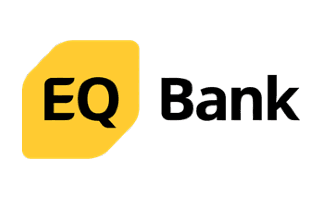
- Earn up to 2.75% interest for 12 months
- Unlimited free transactions
- $0 account fee
- Zero everyday banking fees
- No min. balance required
- CDIC protection for balances up to $100,000
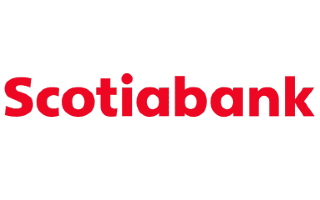
- Earn up to 4.75% for 3 months, 0.40% thereafter
- Can earn interest rate boosts
- No account fee
- No minimum balance required
- CDIC protection up to $100,000
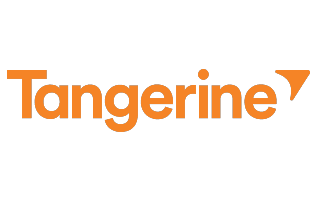
- Earn 4.50% for 5 months, then 0.30% thereafter
- No monthly account fee
- Automatic savings option
- Free access to Scotiabank ABM network
- CDIC Deposit insurance up to $100,000
Who decides the interest rate on savings accounts?
The interest rate on your savings account — as well as personal loans, car loans, credit cards and mortgages — is determined by your bank. However, banks and lenders will use the Bank of Canada’s overnight rate as their benchmark. When the Bank of Canada (BoC) increases the overnight rate, interest rates at banks typically rise, as well.
In Canada, financial institutions usually advertise a compound interest rate that is the annual rate, but some institutions will pay out interest semi-annually, monthly, weekly or even daily.
The faster your account accrues interest — earns interest income — the faster your savings will grow. That’s because of compound interest.
Compound interest means your initial deposit earns interest and, if the money is left untouched, then the new balance — that includes the initial deposit, plus the interest earned — also accrues interest. The more often your interest is compounded the more your account balance grows.
How to find the best high-interest savings accounts
Wondering what the best high-interest savings account is in Canada? We analyzed over 20 savings accounts across more than 20 financial institutions in Canada to find the best accounts across various categories, so you can easily compare options in our full guide to the best high-interest savings accounts here.
The best accounts combine plenty of interest-earning power with no monthly fees and no minimum balance requirements. Some accounts that frequently make our list of the best high-interest accounts include:
- EQ Bank Notice Savings Account → read our account review
- Simplii High Interest Savings Account → read our account review
- KOHO Essential Plan → read our account review
- Scotiabank MomentumPLUS Savings Account → read our account review
- Wealthsimple Chequing Account → read our account review
How to find the best joint savings accounts
If you want to open a savings account with up to three other people? There’s a lot to like about the EQ Bank Joint Savings Plus Account. With no monthly fee, free unlimited transactions and a very competitive interest rate of 1.00% - 2.75%, this account makes it easy to meet your joint savings goals. Check out our joint bank accounts guide for more details.
How to maximize interest rates on savings accounts
Most savings accounts in Canada pay compound interest. This is when the interest you earn on your balance is deposited back into your account, usually monthly, so you can then earn interest on your interest as well as on your initial deposit.
Compound interest is a powerful savings tool and can help you reach your savings goals faster. Rather than growing at the same steady rate, the increase in your balance accelerates over time.
For example, if you invest $5,000 in a savings account with 3% interest compounded monthly:
- After 1 year you’d have $5,152, with interest earnings of $152.
- After 3 years you’d have $5,470, with interest earnings of $470.
- After 5 years you’d have $5,808, with interest earnings of $808.
Use our compound interest calculator below to work out how much you could save.
Savings calculator
| Total savings | |
| Total monthly contributions | |
| Interest earned |
How to reduce fees and costs on savings accounts in Canada
Fees can quickly chip away at your hard-earned savings balance, so it’s important to do everything you can to avoid or minimize fees. Steps you can take include:
- Choose a no-fee account. There are many savings accounts that don’t charge monthly fees, so check out what’s available. Be mindful of any monthly fees because they can quickly and easily wipe out the benefits of interest earned. For example, even with 2% interest, you’d need to keep at least $3,000 in your account just to break even on a mere $5 monthly fee.
- Read the fine print. Check the terms and conditions for details of any other fees that may apply to your account, such as ATM withdrawal or excess transaction fees. Avoid making transactions that will incur fees whenever possible.
- Keep transactions to a minimum. You may only receive a set number of free transactions per month. Avoid paying additional fees by making minimal transactions, and by withdrawing one large amount rather than several smaller amounts.
- Watch out for minimum balance requirements. Some accounts charge a fee if you don’t keep your balance above a certain threshold, so make sure you keep your account topped up.
- Protect your chequing account from overdraft fees. If your savings account and chequing account are with the same bank, you may be able to link the two. In the event that there isn’t enough money in your chequing account to complete a transaction, funds will be transferred from your savings to avoid overdraft fees.
- Keep an eye on interest and fees. Interest rates on savings accounts and fees can change over time, which makes monitoring your account a must.
How to create a savings plan
Creating a savings plan can help you reach your savings goals. The aim here is to identify what you’re saving for, how much you need to save in what timeframe and work out what steps you’ll take to grow your money. Here’s how to create a savings plan.
- Set your goals. The first thing you need to do is work out what you’re saving for. Are you just saving for a rainy day, or do you have a specific purchase in mind? Write down how much you want to save and why.
- Set your timeframe. You can save for a short- or long-term goal, or both. Either way, set yourself a deadline for when you’ll reach those goals. For example, maybe you want to book a vacation before your next birthday or have enough money to put down a house deposit in three years’ time.
- Check your budget. Now it’s time to sit down and work out a weekly budget. Look at where you are spending your income, how much is left over at the end of each week, and whether there are any areas where you can cut back.
- Set up a regular deposit. Decide how much of your paycheque you want to put towards your savings goal, then set up a regular deposit from your chequing account to your savings account. This will automate your savings and will help you stay disciplined at putting money aside each week.
- Make additional contributions when you can. Whenever you come into some extra cash or just manage to save a few dollars on your day-to-day spending, shift it into your savings account. The more money you have in your account, the more interest you’ll earn.
- Track your progress. Check your savings account balance regularly to see how you’re tracking. You might decide that you can increase your regular deposit amount, or maybe even set your sights on even bigger goals once your balance starts growing.
Savings guides
Taxes on interest earned in savings accounts
The interest you earn on your savings account is taxed at the same rate as earned income. For more on how to report this income to the Canada Revenue Agency, read the Finder guide on savings accounts and taxes.
Canadian savings account statistics
Savings accounts are the most popular type of bank account in Canada, with 55.84% of Canadians currently holding one savings account, according to findings from our latest Finder: Consumer Sentiment Survey January 2025.
Interestingly, we found that while 55.84% of of Canadians have one savings account, 24.38% have two accounts and 9.89% have 3 or more, which is a good reminder that having multiple savings accounts can be a good way to organize your savings goals and keep focused on your savings goals.
Savings accounts are also at the top of the list for the type of bank account Canadians plan to open in 2025.
When we asked Canadians which types of savings accounts they are interested in opening, we found that 21.88% plan to open a standard savings account, 18.98% plan to open a TFSA and 16.68% plan to open a GIC. It’s clear that maximizing their savings is a top financial priority for Canadians in 2025.
When asked what the most important features were to Canadians choosing a new bank account, 38.76% said that getting a higher interest rate was one of their top priorities. That’s why it’s important to carefully compare high interest savings account offers before signing up to help you reach your savings goals.
Bottom line
Savings accounts offer a simple but effective way to afford major purchases or just put money aside for a rainy day. But with so many different types of savings accounts available, it’s vital to understand the pros and cons of each type and whether they suit you.
Ultimately compare a wide range of savings accounts and shop around for the best savings account interest rates to help you reach your financial goals.
Sources
A-Z list of savings account reviews on Finder
From CDIC-insured institutions to trendy apps and challenger banks, find a savings account product that fits your needs.
FAQs about savings accounts
Read more on Savings Accounts
-
5% to 12% interest on savings accounts: Fact or fiction?
From a 4% to a 5% interest savings account, here’s how to find the best savings rates in Canada.
-
Savings account interest rates
Compare current savings account interest rates so you can grow your savings.
-
Neo Savings Account Review
Earn a high interest rate on your savings with no minimum deposit requirements and no monthly fees with the Neo Money Account.
-
TFSA vs RRSP: Which investment is better?
Your guide to how TFSAs and RRSPs work, and how to choose the right account for your savings goals.
-
How to budget for a new home
Discover how to budget for a new home, save effectively and plan for ongoing expenses.
-
How to build and manage an emergency fund in Canada
Explore how to create an emergency fund in Canada and where to grow your savings.
-
TFSA Guide: How Tax-Free Savings Accounts Work
Maximize your savings with a TFSA, enjoying tax-free growth, flexible withdrawals and diverse investment options.
-
Guide to registered retirement savings plans (RRSPs) in Canada
Start saving for your retirement at any age by learning about registered retirement savings plans.
-
Best high-interest savings accounts in Canada for 2025
Compare the best high-interest savings accounts in Canada to build a bigger bank balance.
-
Compare Canadian credit union savings accounts
Find out about competitive interest rates, minimal fees and other perks you can enjoy when you bank at a nonprofit institution.




